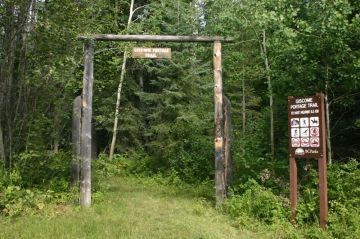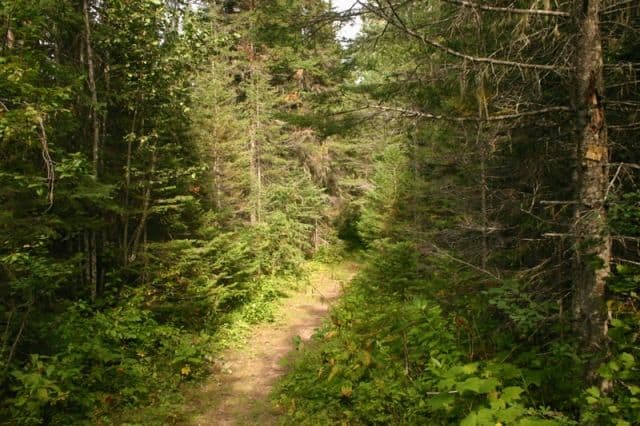Giscome Heritage Trail

Trail Length: 8.5 kilometre
Difficulty: Moderate
Park Amenities:
Giscome Heritage Trail in Prince George, British Columbia, Canada is a designated heritage trail located north of the community of Prince George, British Columbia, Canada. The trail is a route once used by the First Nation people as the shortest route between the rivers emptying into the Pacific Ocean and the rivers emptying into the Arctic Ocean. A route used to collect berries, gather supplies and to access rivers to go fishing.
The Lhedli T'enneh first named the trail Lhedesti. Today the 8.5 kilometre trail is called the Giscome Heritage Trail. Long ago the highest point in the trail separated two great nations. An invisible boundary existed between the Lehdli and the Tse'Kenne First Nation Villages.
In the early 1860's the route began to gain some recognition by the European population as a transport route. The discovery of gold in the Omineca and Peace River area drew allot of attention to the region attracting miners and fur traders.
John Robert Giscome from Jamaica explored the trail first with a partner and some First Nation guides. He wrote a letter of the experience which was later published in a Victoria, BC newspaper in 1863. But it was not until the gold rush in 1891 that the trail became popular.
In July 1997 the Giscome Portage Trail was designated a Heritage Site. The 190 hectare park, of which the trail is part of, also includes the Huble Homestead. A historic site of one of the first pioneer settlements in the region with preserved buildings, restored artifacts and plenty of early history.
The Giscome Portage Trail is a forested route with a mix bag of trail conditions. Some sections of the trail is trekking along a soft grass route, while other sections of the trail is following a hard pack earthy trail. Depending on the season, there is mud too. Some of us like that sort of thing.. mud.
Each trailhead is identified by large log-frame structures and fronted by historical informational signs. The entire one way route should take between 3-4 hours on foot to complete. This will vary based on trail conditions and mode of transportation.
There is very little for amenities on this trail. Following the footsteps of history is the appeal of this adventure. However, for emergencies there is one pit toilet at the half-way point on the trail (North Fraser River Road Crossing). There is little for garbage cans so pack out what you pack in. Bring warm clothing, good footwear and water.
Explore Giscome Heritage Trail in Prince George, British Columbia, Canada
Address:



